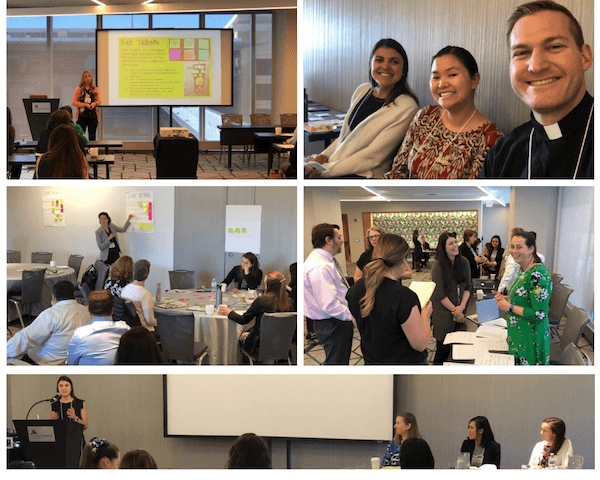Catholic school leaders and teachers can sometimes feel discouraged when they hear about the funding available for hardware and software or the staffing models that make classroom management so much easier in public and charter schools. Many teachers and leaders from parochial schools can feel isolated when they implement a blended-learning model and perceive that others using blended learning have different priorities and resources. For this precise reason, we created the Blended Learning in Catholic Schools Symposium.
Our symposium (or BLiCSS, as we like to call it), gathered 50 great minds together - ranging from teachers and administrators to district administrators and funders - took place over two April days in Chicago. Our objective was simple: to allow individuals involved in blended learning to come together and share ideas, problems of practice, and network with one another.
One of the primary goals of our (now officially annual) symposium is to gather leaders in the blended learning space and explicitly focus on Catholic education. Though this goal may seem modest, our belief in its importance was reaffirmed this year by the feedback we received. The truth is that many of us feel like we are alone in our attempts to use technology to personalize learning in Catholic schools, and thus to gather and collaborate with like-minded people is both refreshing and energizing.
And with this energy, we can accomplish great things! Our symposium this year was brief, but the conversations and work sessions we had were both impactful and inspiring. A few highlights from our time together include:
- A presentation from Jodi McLawhorn, the principal of St. Albert the Great Catholic School in Chicago, who described the slow but deliberate transition her staff has made over the last five years from a completely standardized, one-size-fits-all model to a personalized, mastery-based model enhanced by technology.
- A panel discussion featuring three field leaders - Meg Nozdonfrom GHR Foundation, Kristin Eng from LEAP Innovations, and Emily Gilbride from Seton Education Partners - who shared their unique perspectives on defining and measuring the success of blended learning in Catholic schools. One of the key points that all three of these leaders made was that change takes time, and funders, diocesan leaders, and other stakeholders need to give the schools the time that they need to successfully transition to a new model without pressure or immediate accountability measures in place.
- A work session aimed at identifying the competencies (mindsets, qualities, adaptive skills, and technical skills) leaders need to successfully lead blended-learning Catholic schools. We were amazed by all that was accomplished in one short session and thrilled to know that a working group, led by Melodie Wyttenbach and Shannon Tabaldo, will continue this important project throughout the year.
- Multiple opportunities for current teachers and school leaders to share the strategies that they use to foster student engagement and inform instruction with data. Many teachers were relieved to see that it doesn't take excessive resources to make outstanding instructional decisions–sometimes all it takes is a little creativity.
We were thrilled with the results of this year's symposium and are already looking forward to gathering together next year!
Want to score an invite to next year's symposium? Send us an email at higherpoweredlearning@nd.edu to let us know you're interested!
 Alliance for Catholic Education
Alliance for Catholic Education
